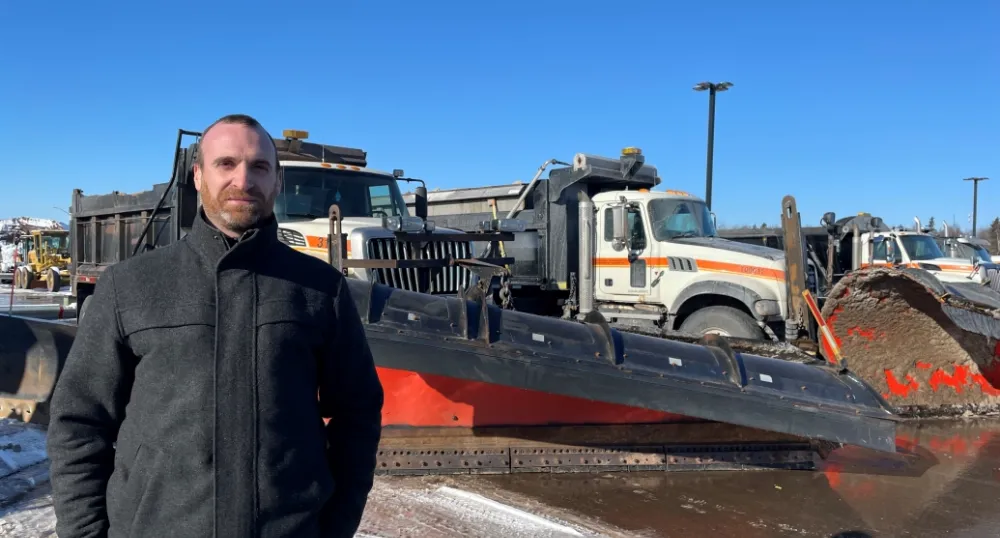Frequently Asked Questions: Winter Operations at Highway Maintenance

Each year, the Department of Transportation and Infrastructure undertakes the important task of maintaining our Island roads during PEI’s increasingly unpredictable winter months.
As weather patterns fluctuate year to year and weather systems change, sometimes on an hourly basis, the department’s Highway Maintenance division, its staff and contractors must be prepared to adjust their strategies to keep roads passable and as safe as possible for the travelling public.
We asked the Director of Highway Maintenance to help Islanders understand how all these moving parts of the department’s winter operations come together to keep traffic flowing and business going
Click here for November 2023 updates to this information.
How many kilometers of roads on PEI receive winter maintenance?
- Approximately 4,450 kilometers of Island roadways receive snow removal and ice control maintenance during the winter on Prince Edward Island. That requires a lot of heavy equipment, materials (such salt and sand) and personnel – and a lot of planning.
Is the Department of Transportation responsible for carrying out all this work?
- Government maintains 1,550 kms while private contractors are responsible for maintaining 2,900 kms of Island roads in the winter. There are 21 snow removal contracts spanning from east to west.
Why do some roads get plowed before others?
- Roads are maintained on a priority basis based on traffic volumes. This means roads with the most vehicles traveling on them are first to get plowed and/or receive ice control.
How do you determine the level of service each road gets?
- Every road receives maintenance based on its classification. The classification type defines the level of service that road gets. These classifications are laid out in the snow removal contracts that the Highway Maintenance division oversees.
- Roads with the highest classification, Class A – such as the Trans-Canada Highway (Route 1) and Veteran’s Memorial Highway (Route 2), for example – receive maintenance 24 hours a day during weather events and are maintained by government equipment and government staff.
Who determines when it’s time to begin plowing?
- Road staff patrol the roads and monitor the weather in their respective districts and this information is used when deciding the best time to dispatch the plow equipment. Department staff also stay in contact with contractors to ensure there is a coordinated effort and everyone is receiving the same information.
How do you decide when to send plows out on the road?
- This also comes down to the classification of each road. Plows go out on Class A roads, our busiest roads, when accumulated snow reaches a depth of 2.5 centimeters. Plowing operations on the remaining roads begins based on their classification level, ranging between 6-10 centimeters of accumulation.
- However, if it’s actively snowing, we might send plows out on those roads after only 3 or 4 centimeters of accumulation. Because the average plow route takes 3 to 4 hours to complete, from start to finish, we do our best to ensure accumulated depths stay within contract guidelines.
Why do plows sometimes get pulled off the roads?
- It comes down to visibility. If it’s not safe for our equipment operators to be out on the roads because the visibility is so poor, we’ll call them off the roads until it’s safe to resume operations. Only in the case of an emergency do we send equipment out in extreme weather.
How come some roads get salted while others receive sand?
- Class A roads, like our main highways, are the only roads on which salt is applied as a means of ice control. All other roads receive sand to provide traction. Salt is for ice control. Sand is for traction control. Approximately 500 kms of Island roads are salted.
Why not salt all the roads?
- There are various environmental considerations that play a role in the use of salt. For example, excess salt can get in our Island waterways, causing environmental sensitivities. Salt also accelerates the degradation of asphalt, affecting the condition of our roads. Not to mention the damage it can do to our vehicles over time.
Why aren’t all roads cleared in the winter?
- Seasonal roads, like clay roads or some gravel roads, aren’t built up to a standard that can support the heavy equipment needed for winter maintenance.
I live on a private road. Will government plow my road?
- Government equipment is not permitted to carry out operations on private land. Landowners are responsible for maintenance on their private roads, year-round. Residents living on private roads can contact a local contractor who may be able to provide snow removal services.
How can I find out what road conditions are like on PEI?
- Visit the 511 website
- The webpage has up-to-date, real-time video (road cams) showing the road conditions from six stations across PEI.
- You can also get a text report of the road conditions on main highways that’s easy to view on your cell phone.
